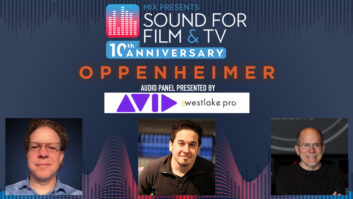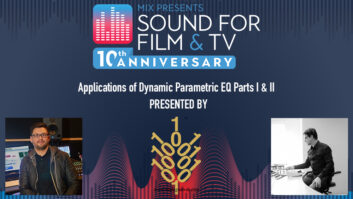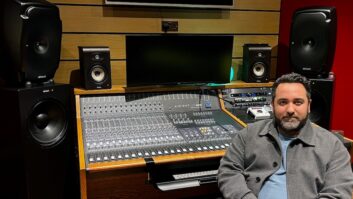On February 8, after more than a half-century in professional audio, Roy Segal quietly stepped down as the head of Fantasy Studios and the Saul Zaentz Film Center in Berkeley, Calif. Over the course of his career, he engineered hit records, oversaw the construction of world-class facilities, managed a small empire and watched the Academy Awards roll in-mostly from behind the scenes, as he preferred it. Befitting his New York roots, his career was truly a three-act play.
Segal was born in Brooklyn and got his first job in professional audio in 1949 as a member of Local 1212 IBEW, installing the telecom systems for the United Nations (first at New Hyde Park, than at the “new” building in Manhattan). He ran P.A. in the delegates’ conference rooms and helped build the racks and wiring for the foreign-language translations. He also helped in the numerous in-house productions that were sent around the world. “It was a good training ground,” he says, “because I got to do all the jobs that were being done at radio stations locally-operating master control and so on.”
He learned remote recording at night, in clubs and at stage shows around town, knowing that he wanted to be involved with music. In 1958, he left the UN for Columbia Records, where he worked on hundreds of projects as an editor. There he was mentored by Don Puluse (later of Berklee College of Music) and soon worked his way up to engineer. By the 1960s, he was recording with the likes of Big Brother & the Holding Company, Sly & the Family Stone and Laura Nyro, the late vocalist who still holds a place in his heart.
Tired of the New York winters and crowds, he left his home in Long Island in 1970 for San Francisco, where Columbia head Clive Davis wanted a studio to support the spate of Bay Area acts he had signed. Segal helped equip and manage the studios (later to become the legendary Automatt), and he engineered for Poco, Redbone, Doctor Hook and the Grateful Dead, among many others. Columbia closed the studios in 1977, and for three years Segal worked as an independent.
In 1980, a friend, Bill Belmont, called and told him that Fantasy Studios was looking for a manager to make the new facility commercial. The Tom Hidley-designed Studio D was nearly finished, but the other rooms, Segal told them, all needed new equipment. He put a Neve 8108 in D (later replaced by an SSL 4000), a Trident Series 80 in the budget room, and a smaller 8108 in Studio C. Then he upgraded the acoustics in A, B and C, asked engineer Phil Kaffel to shake down the main room, and the work started flowing in, mainly rock ‘n’ roll.
In 1982, the owners asked him to run the film division also, which had been struggling. He hired Nina Bombardier to manage Fantasy Studios, hired a manager for the Film Center, and commenced Act III. His first mission was to make the studios fail-safe, and he did, replacing all the equipment and hiring a full-time maintenance staff. Then he went to Hollywood to sell the facility, shaking thousands of hands and inviting people up north. “Any engineer who has ever made a record that was successful and worked with the client again and again is a salesman,” he says. “So we had a good salesman: me.”
In his first two years as head of the Film Center (and thanks to the talents of the editors and mixers), the company walked home with two Best Sound Oscars, for The Right Stuff and Amadeus. The latter will always be special to Segal, both for its portrait of a mad artist and because he was involved in every step, from the prerecords at Abbey Road to the final mix in Berkeley. “That idea of shooting to the music, I don’t know if it’s ever been done as effectively as it was then,” Segal says. The Oscars returned to the Film Center in 1996 with The English Patient.
In early April, Segal and his wife, Elaine, will move into their new home in Palm Desert, where she will paint and he may or may not work on his putting. He plans to stay in touch with the industry, consulting with his heir apparent, Film Center general manager Steve Shurtz. All in all, it’s a wonderful audio legacy.







